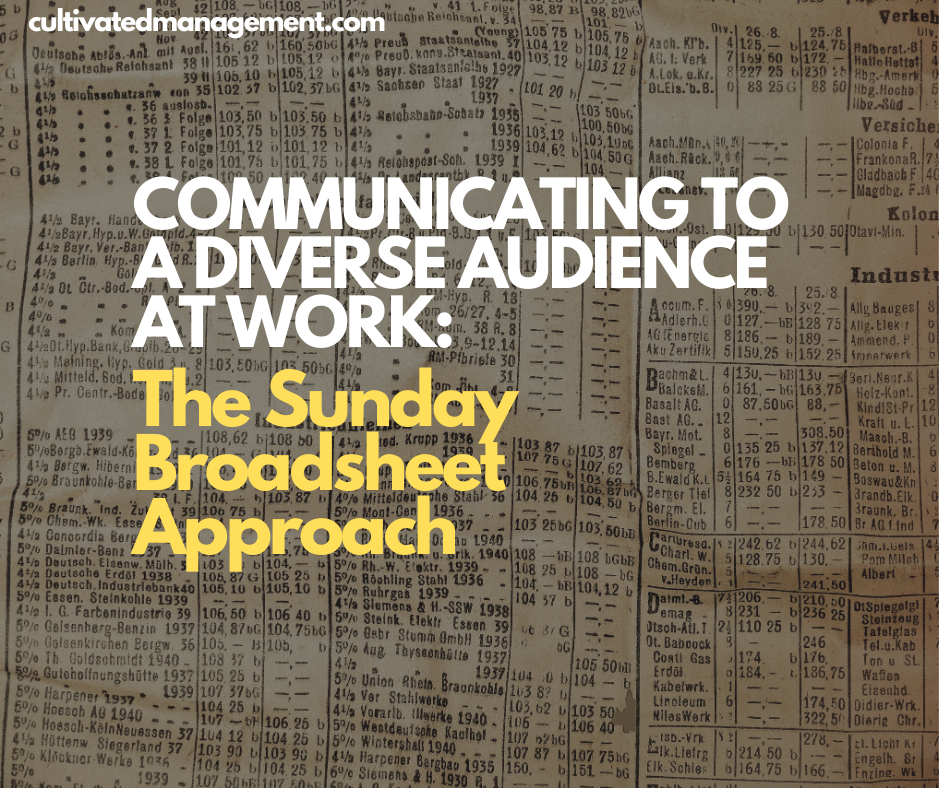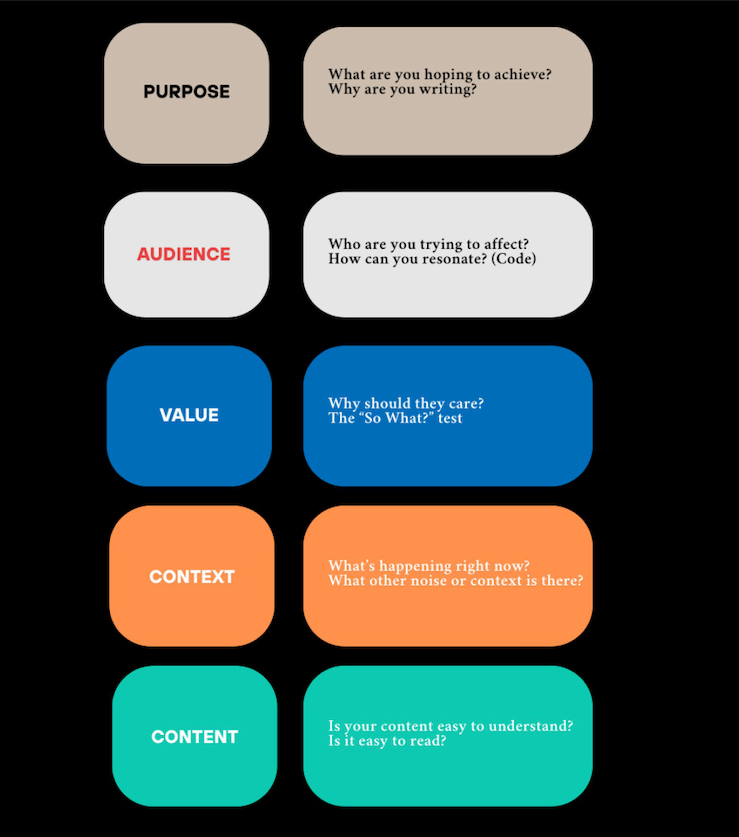
In every organisation, there’s a need to communicate with a broad audience.
Take a large-scale change programme as an example. You’re not just shifting processes or reorganising structures — you’re asking people to move towards something new: new roles, new ways of working, new expectations, new outcomes. That requires communication that’s clear, targeted, and effective.
But here’s where many leaders go wrong. They assume that a broad audience is the same as a generic audience. It isn’t.
A broad audience is a diverse audience. And if you treat them as one-size-fits-all, you’ve failed before you’ve even started. Different roles, teams, and groups need different kinds of information, often communicated in different ways.
This article first appeared in the Meeting Notes newsletter - Get One Idea a Week to Lead with clarity and cultivate workplaces that enrich the lives of all who work in them.
From PAC to PAVCC
Long-time readers will know my communication superpower principle: all communication is built around PAC — Purpose, Audience, and Context.
But when communicating with a diverse audience, I expand PAC into PAVCC (I cover this in the communication super power course):
- Purpose – What are you trying to achieve? Inform, persuade, inspire, calm fears?
- Audience – Who are you trying to reach? What communities are they part of? What do they care about?
- Value – Why should they care? What problem are you solving for them? Has your content passed the “so what?” test?
- Context – What’s going on around them? Is this a time of growth, fear, or uncertainty? Tailor accordingly.
- Content – Is it relevant, useful, and well-created? Or have you buried crucial details in a jumble of irrelevant noise?
When you break down communication with PAVCC, you stand a far better chance of resonating with your audience.

Get Zero to Keynote, Workshop Mastery, and the Communication Superpower course—all in one powerful package.
The Sunday Broadsheet
To bring this to life in an organisation, I use the approach of a Sunday broadsheet newspaper.
When I was a kid, I delivered them on my paper round. They were huge — three or four times the size of the weekday paper. Why? Because of the supplements.
Every reader finds value in the package as a whole, but few people read every section. Personally, I skip the sports section, devour the culture and food supplements, and dip in and out of the main news. Some parts go straight to recycling. Others I keep for days.
That’s the point.
A Sunday paper recognises its audience is diverse. It doesn’t mix politics, sport, and recipes onto the same page in the name of efficiency. It separates content into supplements so people can quickly find what’s useful to them.
Your communication approach at work (especially for large scale change programs) should work the same way.
What Leaders Often Do Wrong
Too often, leaders and managers try to cram everything into a single artefact: a bloated PowerPoint, an overwhelming wiki, or a sprawling playbook.
The result?
- No clear purpose.
- No defined audience.
- Little immediate value.
- Context ignored.
- Content confused, irrelevant, or buried.
It’s efficient for the sender, but ineffective for the audience. And if people can’t find what they need, they won’t act.
People Will Read What Interests Them
Here’s the thing: people will happily read pages of detail — if it solves a problem they care about or it's something they are deeply interested in.
But they won’t wade through treacle to find it. If the information they need is buried inside irrelevant content, you’ve lost them.
So don’t make your job easier at the expense of the reader. Your goal is not to ship a single tidy artefact. Your goal is for your audience to find what is important to them and understand and act.
Think like a Sunday broadsheet editor. Separate the content into clear “supplements” that align with different audiences, groups, roles, or needs, or content topics. That way, each person can quickly find what matters to them, discard what doesn’t, and still feel part of the bigger program of work.
Final Thought
A broad audience is not a generic audience. It’s a diverse one.
When you apply PAVCC and the Sunday broadsheet mindset, you stop wasting people’s attention and start giving them the clarity they need. You also stand a much better chance of ensuring your content reaches the right audience.
And in times of change, clarity is the most valuable thing you can provide.
